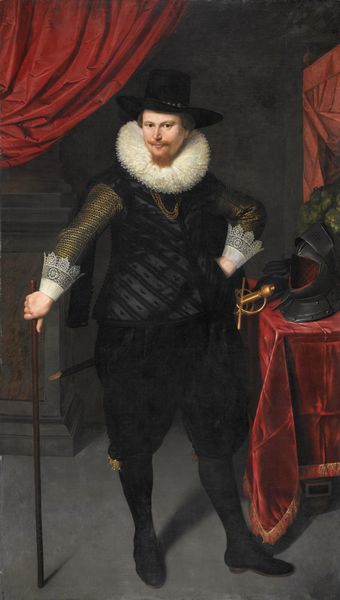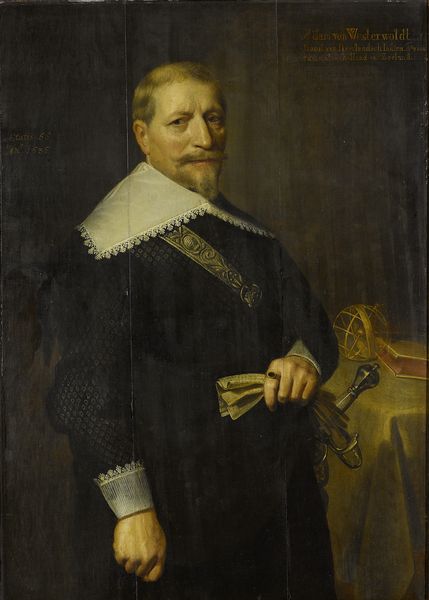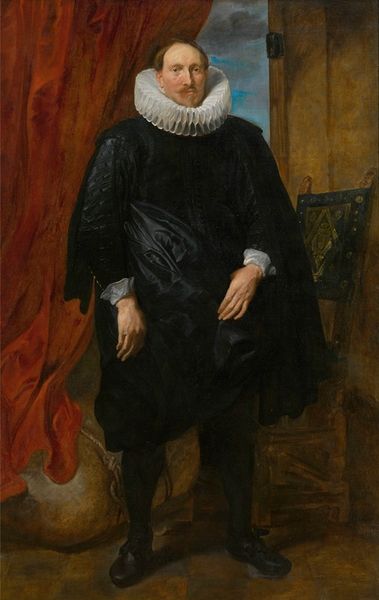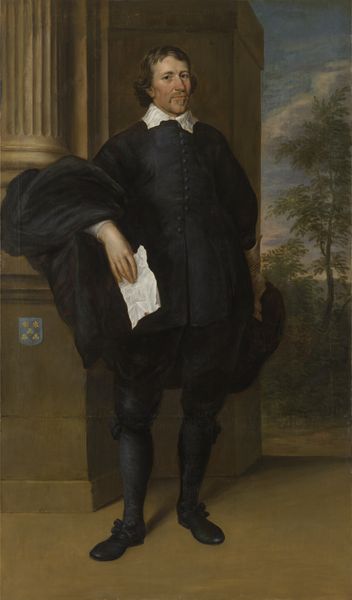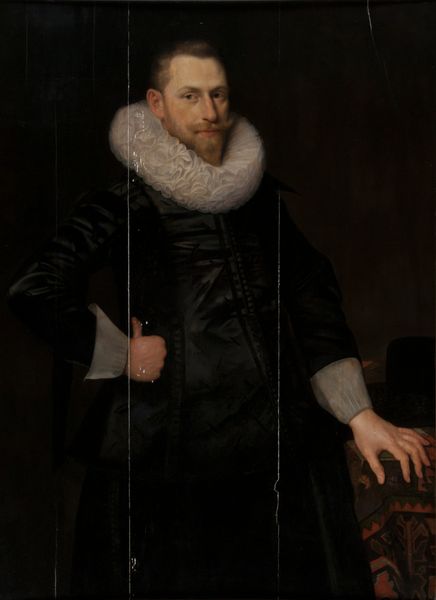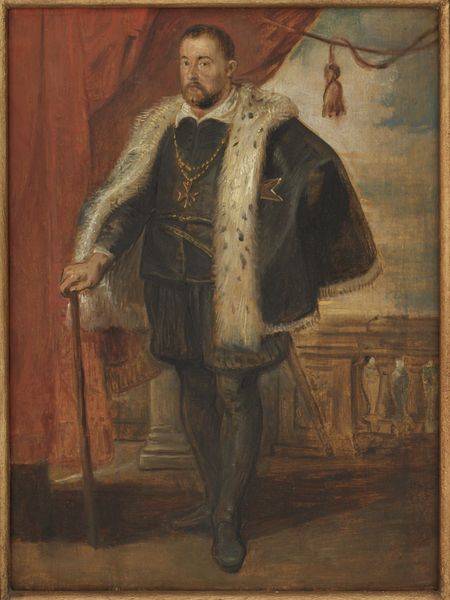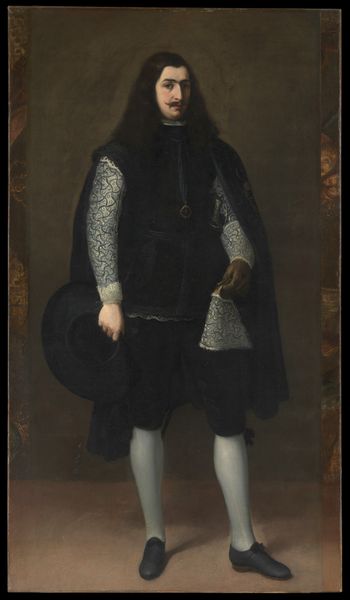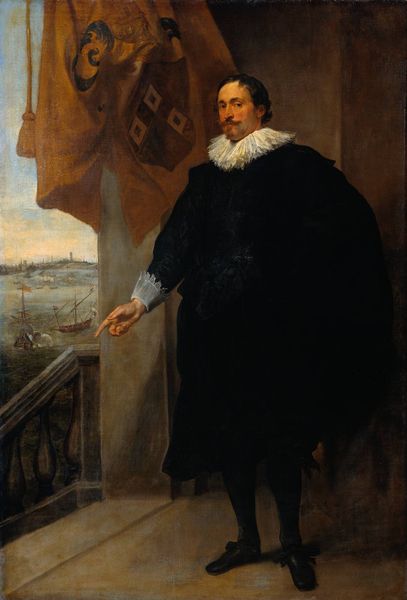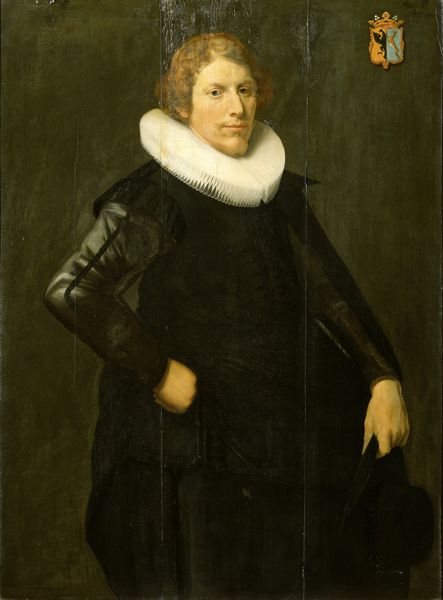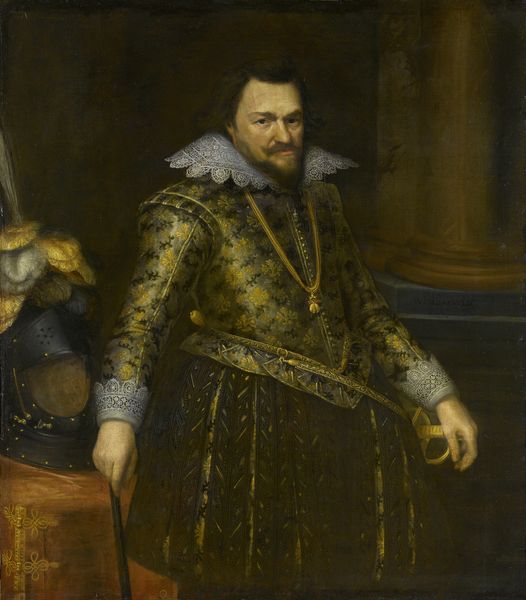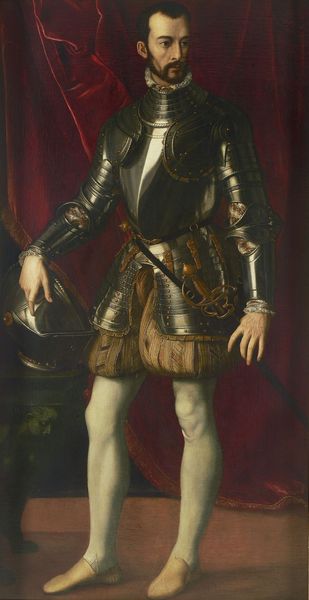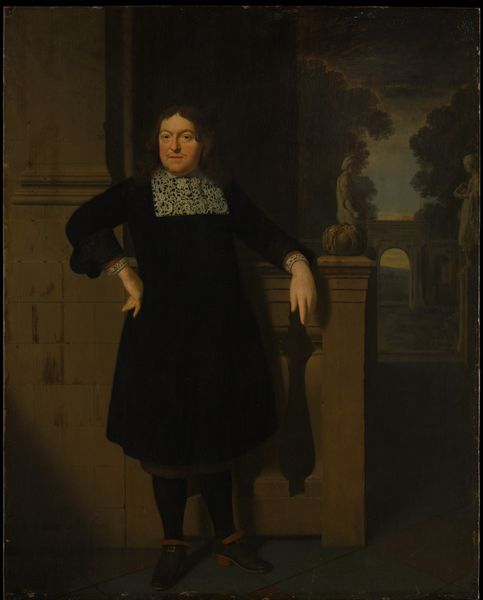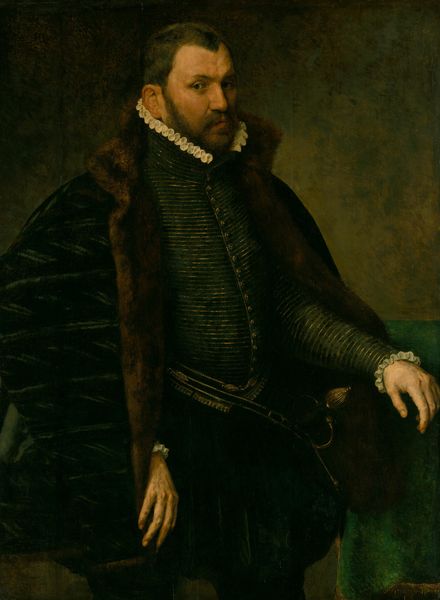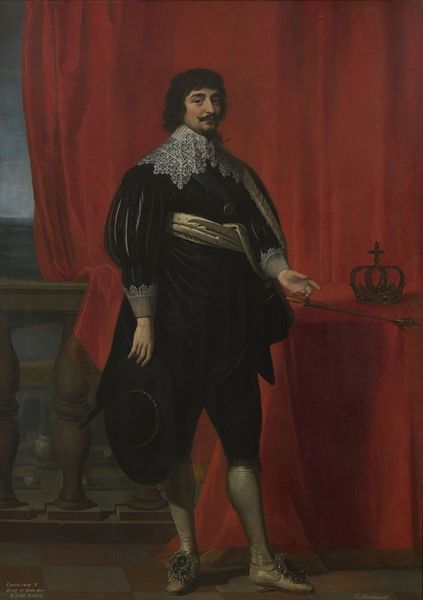
painting, oil-paint
#
portrait
#
baroque
#
painting
#
oil-paint
#
figuration
#
oil painting
#
history-painting
Dimensions: support height 205 cm, support width 136 cm, outer size depth 8 cm, total weight 36 kg
Copyright: Rijks Museum: Open Domain
Curator: Standing before us is "Portrait of a Male Member of the Van der Borcht Family," a striking oil painting completed around 1635 by Anthony van Dyck. It currently resides here at the Rijksmuseum. Editor: He looks so...severe! Almost like he caught you doing something you shouldn't. Though, if you imagine him with, say, a rubber chicken, it could be comedy gold. I'm getting a very dramatic vibe. Curator: Van Dyck, renowned for his contributions to Baroque portraiture, situates this man within a powerful social context. The dark clothing, the stark white ruff, the distant naval battle – they speak to status and perhaps military involvement. What do you see in that interplay of darkness and light? Editor: Well, the darkness certainly amps up the drama, doesn’t it? It feels like he’s emerging from shadow. The lace cuff practically glows, grabbing your eye like, "Look at my wealth!". That glimpse of the ships...it is a fascinating background element. It feels almost cinematic – foreshadowing, maybe? Like a subtle clue about his place in the world? Curator: Precisely! The "history painting" aspect embedded within a portrait elevates it. His assured pose speaks volumes about masculinity and authority during the period, perhaps even commenting on the Dutch Golden Age. Notice the detailed attention van Dyck gives to conveying the sitter’s powerful stance and status. Editor: You’re right, that gaze holds a lot of power. You'd never know if you could have a good time hanging out with him. And the light on his fingers...like a stage spotlight is hitting him. Very theatrical, very staged. Is it me, or does he appear just the *slightest* bit uncomfortable with posing? Curator: An interesting point, as many of these aristocratic portraits were intended to convey a perfect, almost idealized image, despite the inherent performativity you noted. What does this portrait communicate to modern audiences, given our changing understandings of masculinity and social hierarchy? Editor: I suppose in our age, we look for cracks in the armor. And it kind of looks like the armor has some dents. To me it reads: He’s playing a role – a very serious, very important role – but there is humanity somewhere, I bet. You know? Somewhere under all that black fabric and that ridiculously wonderful ruff! Curator: A layered reading – insightful. Thank you for helping us look closely at both the painting itself and the social-historical space surrounding this portrait. Editor: Absolutely! Now if you will excuse me, I suddenly have an urge to buy a few yards of black velvet and practice posing.
Comments
No comments
Be the first to comment and join the conversation on the ultimate creative platform.
